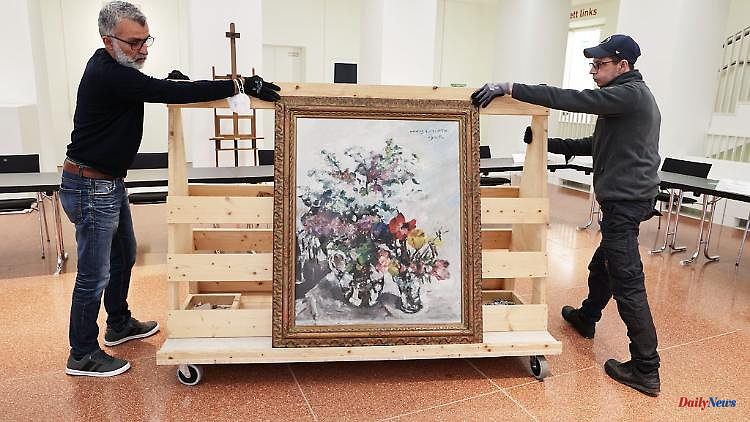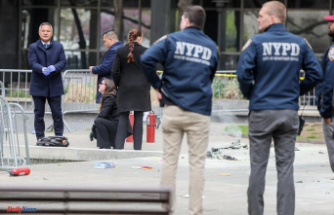In 1937, the Nazis removed around 20,000 works of art that had been defamed as "degenerate" from museums. Today the works are scattered all over the world. A picture by Lovis Corinth is now returning to Düsseldorf.
Düsseldorf (dpa/lnw) - Thousands of modern works of art were plundered by the National Socialists in the museums in 1937 - 85 years after the "Degenerate Art" campaign, a painting by Lovis Corinth has now returned to the Düsseldorf Kunstpalast. Director General Felix Krämer presented the flower still life with lilacs and anemones by the German painter (1858-1925) for the first time in Düsseldorf on Monday. Until 1937, the picture belonged to the municipal art collections.
After the confiscation, the painting was bought at an auction in Lucerne in 1939 by the controversial Swiss arms manufacturer and art collector Emil Bührle. Since then it has been in the collection of Bührle and his descendants. The Ernst von Siemens Art Foundation, the North Rhine-Westphalia Ministry of Culture and the Cultural Foundation of the federal states supported the buyback for a mid-six-figure sum.
"This still life by Lovis Corinth is an important part of the museum's history and of exceptional painterly quality," said Krämer. The work, which is characterized by expressionism, is to be shown again next year as part of the re-presentation of the Kunstpalast collection. The floral still life from 1925 is one of Corinth's main works and was one of the artist's last paintings before he died. It was acquired for the Düsseldorf collection shortly after it was created. Corinth had visited the city on the Rhine a month before his death.
The Nazis took 113 paintings, ten sculptures and 929 works on paper from the Düsseldorf Municipal Art Collections alone. The history of the Corinth work and the presentation are a contribution to the processing of the "Degenerate Art" campaign, said Minister of Culture Isabel Pfeiffer-Poensgen.
The Nazis used the term "degenerate" to defame Cubism, Expressionism, Dadaism and New Objectivity. From August 1937, the modern art museum holdings were almost completely looted. A total of almost 20,000 works by around 1,400 artists were brought from more than 100 museums and collections. The art was sold, auctioned off or destroyed. In 1938, the Nazis legalized the looting campaign. The consequences of the bloodletting can still be felt in the museums today.












